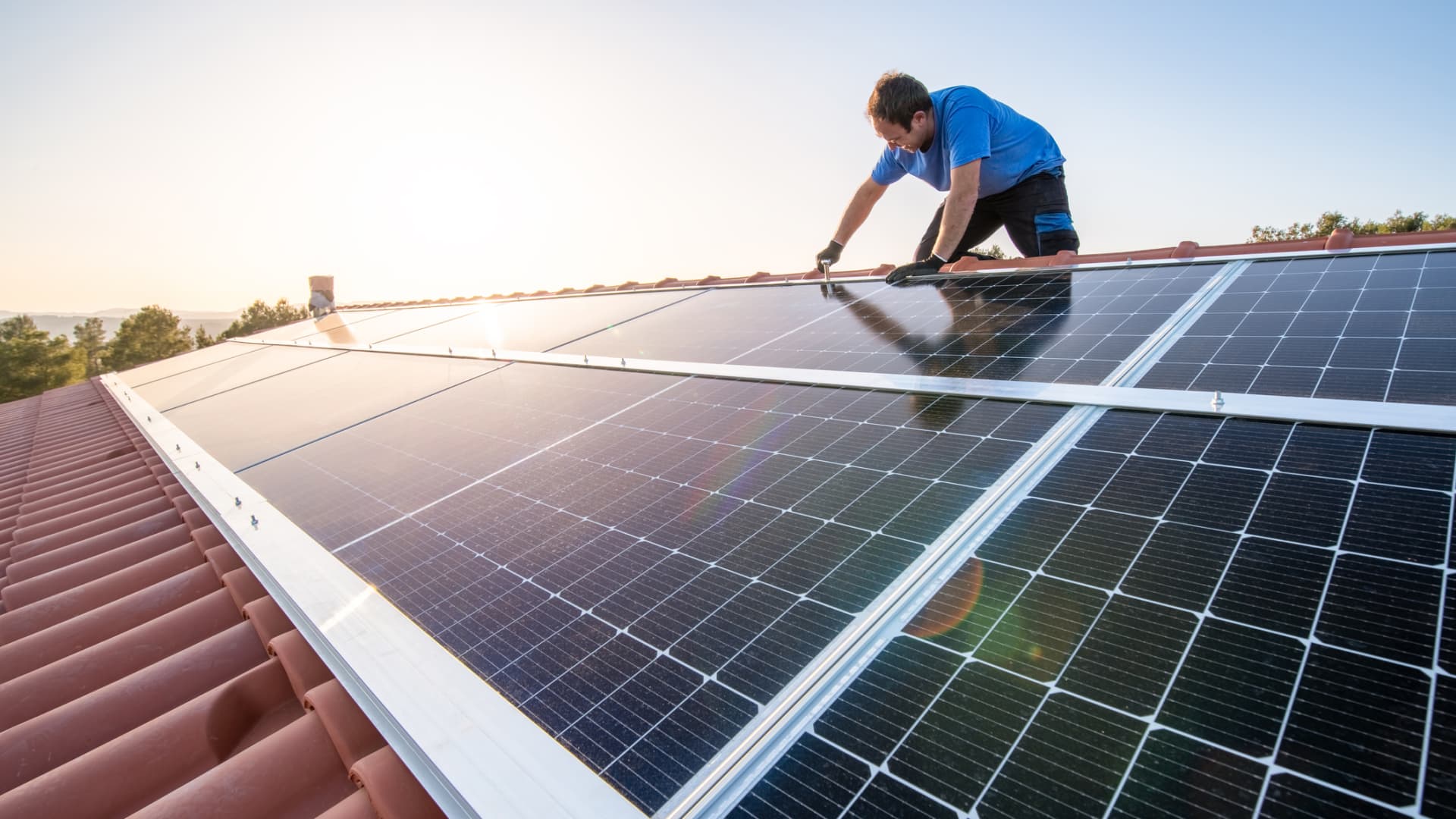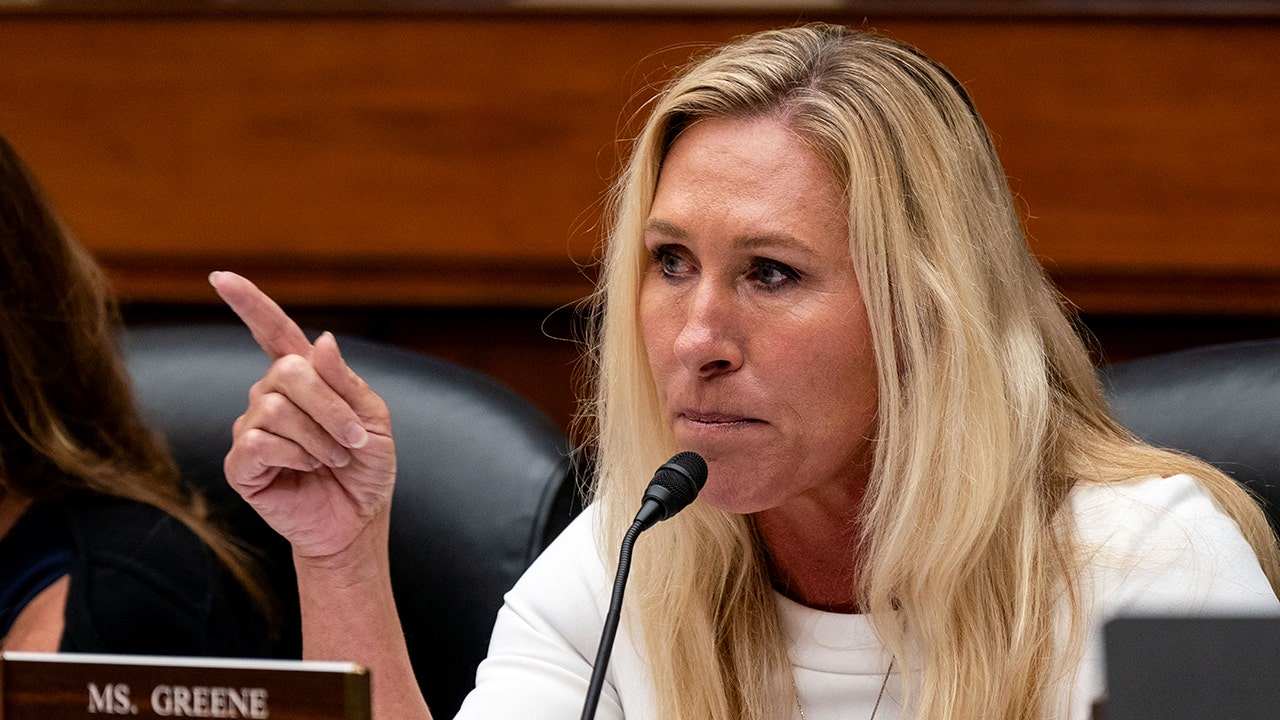Finance
The homeowner basics of financing solar power for residential real estate

To avoid rising energy costs and benefit from increasing renewable energy incentives and tax breaks, more homeowners may be considering a home solar system. Last year, the growth of residential solar in the U.S. boomed. Even as overall growth of solar installations, including commercial and utility-scale projects, decreased year over year, residential solar projects grew by a “staggering” 40%, to just under six gigawatts, according to the Solar Energy Industries Association. That growth came across a record 700,000 U.S. homeowners who installed solar in 2022.
There are a host of complicated issues in the solar market, including some contentious politics. Battles remain over foreign sourcing of solar energy components and tariffs on imports from China — President Biden recently vetoed a bill that would have re-imposed tariffs and likely driven up costs throughout the solar supply chain. Net metering, a primary way homeowners can be repaid by the grid for generating their own energy, took a big hit in California — the nation’s biggest solar market — last year, and that is expected to lower overall growth of residential projects this year. And lending conditions throughout the credit market are tighter today due to Federal Reserve interest rate hikes, driving up loan rates for solar projects.
Financing may be necessary or at least well worth considering for most homeowners interested in upgraded their home energy with solar. The national average for a 10 kilowatt solar panel installation in 2023 is around $20,000 after taking into account a 30% federal solar tax credit, according to EnergySage, a marketplace that connects consumers with energy companies. Loans have boomed as a way to finance solar, and even as low and in some cases zero-interest rate offers disappear, higher retail utility bills continue to make lending rates reasonable. According to energy consulting firm Wood Mackenzie, the loan segment’s record share of the residential solar market reached roughly 70% of projects in 2022. It won’t repeat that in 2023, but will remain a large part of the solar market.
Starting with the basics is the best way for homeowners to start wrapping their heads around solar power financial decisions. Here are some key things to consider before making the decision to move ahead with a residential project.
Do your research on state-by-state solar costs
“Before you investigate how you are going to pay for it, it’s easy to find out what you might want to buy and what it might cost,” said Joel Rosenberg, a member of the special projects team at Rewiring America, a nonprofit focused on electrifying homes, businesses and communities.
He recommends using EnergySage to find competing solar quotes. This will give homeowners a better idea — beyond nationwide averages — based on real-life factors such as the size of the system. This is important to understand before they start considering how to pay for it, he said.
Seek out local energy financing programs
Once homeowners are ready to dig more into financing options, their state’s energy office and a local electric utility can be good places to start because both may offer solar financing programs.
“They may not be directly involved, but often they can flag things that may be worth looking into,” said Madeline Fleisher, an Ohio-based environmental and energy lawyer who runs a clean-energy website.
Ohio, for example, has a state program that offers a reduced rate on a solar loan with certain lenders.
Get solar loan quotes from multiple lenders
Consumers should seek quotes from three to five sources, being sure to pay careful attention to terms and conditions, said EnergySage CEO Vikram Aggarwal.
Potential lenders can include a homeowner’s local bank, credit union, national bank or a specialized institution known as a green bank that focuses on loans for environmentally friendly projects.
Green banks may have even more robust offerings, Fleisher said. Using a simple Google search for “green bank” and your state may yield options. To find potential lenders, homeowners can also consult broader industry sources such as the Green Bank Network or the Coalition for Green Capital.
Consider solar installation company offers carefully
Solar installers, such as Sunrun and Sunnova, also offer loans.
Most installers offer loans for a duration of 15, 20 or 25 years, while banks may offer short-duration loans at lower interest rates and for lower fees, Aggarwal said. Interest rates can vary widely depending on factors such as the loan amount, duration and the strength of the borrower’s credit. Typical loan amounts are $1,000 to $100,000, and annual percentage rates for people with excellent credit can range from around 6% to about 36%, according to a recent analysis by Nerdwallet.
“Installers are great at installing solar, but they may not be experts at finance or banking,” said Jason MacDuff, president of greenpenny, a virtual and carbon-neutral bank focused on financing sustainable projects.
He said any homeowner considering a loan through an installer should make sure to speak directly to the financer. Homeowners should seek to fully understand the financial arrangement they are entering into, he said. For instance, will it be a fixed or variable rate? What are the upfront financing costs? And what is the projected monthly payment?
It’s also worth noting that installers don’t always mention the fees, so be sure to ask about the installation cost if paying cash versus financing, Aggarwal said. Prepayment fees aren’t likely, but it’s worth asking and confirming in the loan documentation, just to make sure, he said.
Scrutinize fees, terms and conditions on solar debt
Consumers should always ask what fees are associated with the loans being offered, in addition to the interest rate, since fees could amount to thousands of dollars.
Homeowners should also be familiar with other terms, conditions and options that may be available. For example, some loans allow the borrower to amortize once to reduce the amount. To illustrate, if a homeowner takes a $10,000 loan and then receives a tax credit of $3,000, the money can be used to pay the lender and bring down the loan to $7,000. Generally, this option, when available, can be used once within the first 12 to 18 months of the loan, Aggarwal said.
Home equity loans and HELOCs could be a good option for homeowners who have built sufficient equity in their home. These options could also work well for homeowners whose credit doesn’t allow them to qualify for a personal loan with a favorable rate, according to Bankrate.
Be careful about lending risks that can lead to home foreclosure
The last thing any homeowner should do is let a green finance loan lead to foreclosure. That has been a concern for the Federal Trade Commission and the government’s consumer watchdog, the Consumer Financial Protection Bureau. Property Assessed Clean Energy (PACE) loans, secured by a property tax lien on the borrower’s home, have been used over the past decade to finance renewable energy home improvements like solar power and were particularly popular several years ago.
The CFPB has worried about lenders that aren’t operating on the level, and these loans leading borrowers to fall behind on mortgage payments, and to a deterioration in credit worthiness. A new proposal from the CFPB seeks to protect homeowners from “unscrupulous companies” offering “unaffordable loans with exaggerated promises of energy bill savings,” according to a recent statement from CFPB Director Rohit Chopra.
The solar finance market is dominated by a handful of players
While there are many options for loans in the residential solar market, the data shows that total lending volumes are dominated by five players that financed 71% of the entire residential market in 2022, according to Wood Mackenzie. That was similar to 2021’s lending market. GoodLeap (26% of the residential solar market) was No. 1 overall.
Sunrun and Sunnova together captured 79% of the third-party-owned market for home solar. This brings up another key decision for homeowners: should they finance and own the system themselves or lease the rights to their solar energy generation?
Solar leasing is poised to be more popular, but has downsides
Leasing options exist and may be attractive to some homeowners as a way to avoid the upfront costs of equipment and installation. Another benefit is that the homeowner isn’t responsible for maintenance. Leasing to homeowners is expected to become more popular this year, according to Wood Mackenzie, because of additional credits leasing companies can receive under the Inflation Reduction Act. These “adders” beyond the core 30% tax credit make the economics more attractive to companies that lease solar systems to homeowners.
But there are downsides for homeowners.
Leasing is generally more expensive for homeowners and they won’t be eligible for the 30% tax credit, Aggarwal said. Leasing can also present several challenges when homeowners decide to sell their house, so it’s important to weigh the pros and cons carefully, Aggarwal added.
If considering this route, homeowners should be sure to understand the specifics about the lease process, MacDuff said. They should, for example, know how the lease payments compare with their existing utility payment and what the repair process will be if issues arise.
Solar prices continue to drop, so rushing isn’t the right decision
The tax credit that was extended and increased as a result of the Inflation Reduction Act makes the cost of solar installation more palatable for consumers, Rosenberg said. But if it’s still out of reach financially, even with a loan, check back from time to time because prices continue to drop and homeowners have 10 years to qualify for the IRA incentive.
“You can get a quote in 2023 and a quote in 2026 and it might be two-thirds of the cost and you can still get the tax credit,” he said.

Finance
The Secret to Making Successful Financial New Year’s Resolutions – NerdWallet

The investing information provided on this page is for educational purposes only. NerdWallet, Inc. does not offer advisory or brokerage services, nor does it recommend or advise investors to buy or sell particular stocks, securities or other investments.
The start of a new year can bring a surge of motivation around setting new goals, including financial resolutions.
One way to help those goals become reality, financial experts say, is to make them as specific as possible. Then, track your progress, while allowing flexibility for unexpected challenges.
“It’s easier to track progress when we know where we are going,” says Sylvie Scowcroft, a certified financial planner and founder of The Financial Grove in Cambridge, Massachusetts.
That’s why she encourages her clients to set clearly defined goals, often related to paying off a specific debt, saving a certain amount per month or improving their credit score.
Here are more tips from financial experts about crafting 2025 financial goals:
Pick your top priorities
Trying to accomplish too much can feel overwhelming. Instead, pick your priorities, says Cathleen Tobin, CFP and owner of Moonbridge Financial Design in Rhinebeck, New York.
She suggests focusing on those big, often emotionally-driven goals to find motivation.
“It’s more compelling than just a number,” she says. For example, do you want to make sure you’re on track for retirement or save money for a house? “Start there.”
Be as specific as possible
Scowcroft says she sees clients get tripped up by selecting overly broad goals, such as “get better with money.” Instead, she encourages people to select specific action items, such as “sign up for a budgeting tool and set aside time each month to learn where my money is going.”
That level of specificity provides direction so you know what steps to take next, she adds. For example, if your top priority is to become debt-free, then your specific goal might be to pay off an extra $200 of your debt balance each month.
Tobin says labeling savings accounts so they correspond with goals can also help. An emergency fund could be named something like “Peace of mind in 2025,” so you remember why you’re saving every time you make a transfer.
“It’s more motivating than just ‘emergency fund,’” Tobin says.
Get more financial clarity with NerdWallet
Monitor your credit, track your spending and see all of your finances together in a single place.
Track your progress
Measuring your progress as the year unfolds is also a critical component of successful goal setting, Tobin says.
She compares it to weight loss. If you want to lose 20 pounds by June, then you need to lose about a pound a week for the first six months of the year. Similarly, she says it helps to break savings goals into microsteps that specify what you need to do each week.
Schedule a weekly or monthly check-in with yourself to make sure you are meeting those smaller goals along the way. You might want to review your debt payoff progress or check your credit score, for example.
“Being able to break it down into steps that can be done each week or twice a month really helps,” Tobin says.
Automate where you can
If your goal is to save more money, then setting up an automatic transfer each month can help turn that goal into reality, as long as you know you have the money in your checking account to spare.
“It reduces the mental load,” says Mike Hunsberger, CFP and owner of Next Mission Financial Planning in St. Charles, Missouri, where he primarily supports veterans and current members of the military.
He recommends starting small to ease into the change.
“I wouldn’t jump to double what you’re currently saving,” he says. For example, when it comes to saving in a retirement account, if you’re starting with a 3% contribution, you might want to bump it up to 4%, then slowly increase it from there.
“My number one piece of advice is to start small, but make sure you scale over time,” Hunsberger adds. “Because it’s gradual, you probably won’t notice it impacting your lifestyle.”
Adjust as needed
“Stay flexible,” Scowcroft says. “Part of it is just being kind to yourself and not being too rigid.”
When unexpected challenges come up, such as a big unplanned expense, you might have to pause making progress on your goal and reset.
You might even need to change your goal. Scowcroft says that doesn’t mean you “failed,” just that life changed your plans. Dwelling on any negativity won’t help your forward progress.
Team up with a friend
Sharing your goals with a friend can also make it easier to reach them, Scowcroft says.
“It really helps to have an accountability buddy,” she says.
She suggests putting a regular “money date” with your friend on the calendar so you can ask each other how you’re doing, brainstorm any challenges or even budget together side-by-side.
“It’s a fun excuse to meet up with a friend.”
Get more financial clarity with NerdWallet
Monitor your credit, track your spending and see all of your finances together in a single place.
Finance
I’m not financially literate. Here’s how I could be. – The Boston Globe

If you asked me what the process for setting up a Roth IRA looked like, I doubt I could offer you a thorough response. The same goes for mortgages and loans and interest. When I had to fill out my first W-9 form, I was admittedly more than a bit confused.
In short, financial literacy isn’t my forte. And that’s because, like many Massachusetts public school students, I’ve never had to take any sort of personal finance class.
Indeed, throughout the debates over eliminating MCAS as a graduation requirement for high schoolers, we heard quite a bit about the state’s educational gold standard. So is it not the least bit shameful, or at least embarrassing, that our state does not require high school students to take a financial literacy class when a majority of states do?
Absolutely. And it needs to change.
Twenty-six states, including Rhode Island, New Hampshire, and Connecticut, have passed legislation making a personal finance course mandatory for high school students. Meanwhile, Massachusetts received an “F” from the Champlain College Center for Financial Literacy, which released a report card in 2023 evaluating how each “state delivers personal finance education in its public high schools.” In addition, a 2023 report card(link?) from the American Public Education Foundation gave the state a “C” for its financial literacy requirements — a score worse than or equal to all but six states.
Meanwhile, across the state, credit card and student loan debt have spiked to eye-popping levels. As of the second quarter of this year, the average Massachusetts resident had a credit card balance of $8,556 and $33,710.38 in student loan debt. The latter is particularly troubling for young people like myself. For the next four years, countless high school seniors throughout the Commonwealth will be attending college, paying tens of thousands of dollars on top of day-to-day expenses.
The need for personal finance courses in Massachusetts is tremendous — a need that, as per a 2021 report from the state’s Office of Economic Empowerment, is recognized almost universally among teachers and, importantly, students.
Yet, as a result of being taught next to nothing about personal finances, many of us are left ill-prepared for these new circumstances. Our understanding of credit cards is limited to, as State Treasurer Deb Goldberg so eloquently articulated to GBH, “The parent puts a plastic card into the wallet and boom: out comes money.” And so the cycle of taking out loans, accumulating massive debt, and working for years before being able to pay it off persists.
Why perpetuate the cycle when it is so clear that these classes work? According to a 2021 Ramsey Solutions survey, among the teenagers who have completed a personal finance class, nearly 80 percent said that they’ve created a monthly budget for themselves, 94 percent felt confident about saving money, and 87 percent understood how to pay income taxes. And, as noted in the OEE’s report, personal finance courses are tools that “increase social mobility for low-income or immigrant students.” Requiring such classes really couldn’t make much more sense.
At my own high school, Brookline High School, financial literacy is offered in the form of a popular elective, “The World of Money: Practical Studies in Finance and Investment,” which “integrates the basic principles of economics, money management, investing, and technology,” according to the course catalog. Every spring, as course selection rolls around, hundreds of students eye this semester-long course, but with only so many spots, most cannot take it — and, consequently, miss out on an opportunity to learn about financial literacy.
Recognizing the imminent need to educate ourselves on matters of taxes, loans, investments, and more, several members of Brookline High School’s Student Council, including myself, have proposed amendments to our student handbook that would incorporate a financial literacy component in our graduation requirements and incorporate personal finance lessons into our weekly advisory classes. Our work would ensure that such important life skills are accessible to all students, not merely for those lucky enough to find a place in the class.
But while such efforts are certainly a step in the right direction on this issue, they are not enough. Financial literacy should not be a privilege for schools with a proactive student body; it is a fundamental aspect of our lives, and our state’s education system must begin reflecting that. The state must require personal finance courses for graduation — it’s the smartest investment we can make.
Ravin Bhatia is a senior at Brookline High School.
Finance
NexPoint Real Estate Finance, Inc. Announces Series A Preferred Stock Dividend

DALLAS, Dec. 24, 2024 /PRNewswire/ — NexPoint Real Estate Finance, Inc. (NYSE: NREF) (the “Company”) today announced a dividend for its 8.50% Series A Cumulative Redeemable Preferred Stock (NYSE: NREF PRA) of $0.53125 per share. The dividend will be payable on January 27, 2025, to stockholders of record at the close of business on January 15, 2025.
About NexPoint Real Estate Finance, Inc.
NexPoint Real Estate Finance, Inc., is a publicly traded REIT, with its common stock and Series A Preferred Stock listed on the New York Stock Exchange under the symbol “NREF” and “NREF PRA,” respectively, primarily focused on originating, structuring and investing in first-lien mortgage loans, mezzanine loans, preferred equity, convertible notes, multifamily properties and common equity investments, as well as multifamily and single-family rental commercial mortgage-backed securities securitizations, promissory notes and mortgage-backed securities. More information about the Company is available at nref.nexpoint.com.
CONTACTS
Investor Relations
Kristen Griffith
IR@nexpoint.com
Media Relations
Prosek Partners for NexPoint
pro-nexpoint@prosek.com
View original content to download multimedia:https://www.prnewswire.com/news-releases/nexpoint-real-estate-finance-inc-announces-series-a-preferred-stock-dividend-302339003.html
SOURCE NexPoint Real Estate Finance, Inc.
-
/cdn.vox-cdn.com/uploads/chorus_asset/file/24924653/236780_Google_AntiTrust_Trial_Custom_Art_CVirginia__0003_1.png)
/cdn.vox-cdn.com/uploads/chorus_asset/file/24924653/236780_Google_AntiTrust_Trial_Custom_Art_CVirginia__0003_1.png) Technology5 days ago
Technology5 days agoGoogle’s counteroffer to the government trying to break it up is unbundling Android apps
-

 News6 days ago
News6 days agoNovo Nordisk shares tumble as weight-loss drug trial data disappoints
-

 Politics6 days ago
Politics6 days agoIllegal immigrant sexually abused child in the U.S. after being removed from the country five times
-

 Entertainment6 days ago
Entertainment6 days ago'It's a little holiday gift': Inside the Weeknd's free Santa Monica show for his biggest fans
-

 Lifestyle6 days ago
Lifestyle6 days agoThink you can't dance? Get up and try these tips in our comic. We dare you!
-

 Technology1 week ago
Technology1 week agoFox News AI Newsletter: OpenAI responds to Elon Musk's lawsuit
-
/cdn.vox-cdn.com/uploads/chorus_asset/file/25672934/Metaphor_Key_Art_Horizontal.png)
/cdn.vox-cdn.com/uploads/chorus_asset/file/25672934/Metaphor_Key_Art_Horizontal.png) Technology1 day ago
Technology1 day agoThere’s a reason Metaphor: ReFantanzio’s battle music sounds as cool as it does
-

 News2 days ago
News2 days agoFrance’s new premier selects Eric Lombard as finance minister



















